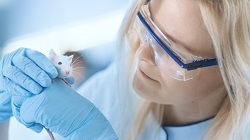Trending Science: Breakthrough method turns open wounds into healthy skin
There’s good news on the horizon for victims of burns and other severe injuries. Elderly patients with bedsores or chronic diseases such as diabetes also stand to benefit greatly. Following 10 years of work, a research team has transformed tissue cells into skin cells in mice. This finding will help heal serious wounds caused by burns or ulcers that are usually treated with skin grafts. Published in the journal ‘Nature’(opens in new window), the study presents a promising technology in which genes are inserted into cells to change them from one form to another. The genetic technique known as cellular reprogramming directly converts the cells that are naturally present in an open wound into new skin cells. It does so by reprogramming the wounded cells to a stem-cell-like state. In this state, cells return to a previous, more flexible condition from which they can develop into different cell types. Reprogramming cells for regenerative medicine To investigate the most efficient way to transform cells, the researchers conducted about 2 000 trials with different gene combinations. They identified 55 protein molecules that are key to skin regrowth. The tests led to a four-gene combination, which was then tested on mice wounds. The team sealed the wounds off from the surrounding skin to reproduce the adverse conditions at the centre of a large burn or similar injury, with no adjacent skin to stimulate healing. By using the technology and current drug treatments, they were able to heal a lesion 1 cm in diameter in about 2 weeks. “What we did in the current study is generate three-dimensional skin coverage in an experimental open wound setting in which no coverage or healing would ever be possible,” Prof. Juan Carlos Izpisua Belmonte, a scientist at the Salk Institute for Biological Studies in California and one of the study’s senior authors, told the United Kingdom’s ‘Independent’(opens in new window). “This observation suggests that we could potentially cover or heal a wound of any size in a specific time frame.” He added: “Though this is not specifically examined in our current work, some of our findings suggest that our reprogramming technology has the potential to return aged or somewhat unhealthy skin back to a more ‘youthful’ state.” There’s still plenty of work to be done to ensure the long-term safety of this approach before it becomes available to patients. “The current study is the beginning, and we believe that the timeframe for healing may be further shortened in the future,” Prof. Belmonte said in the British newspaper ‘The Guardian’(opens in new window). The results are very promising, but they’re only the first step in the long journey to realising gene therapy for wound healing. If successful in helping to treat chronic ulcers in humans, this technology could eventually be a simpler and quicker solution than surgical skin transplants or artificial skin grafts. Only then can the scientific community dream of applying this groundbreaking technique to other tissues and organs.
Countries
United States



